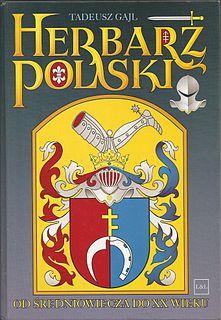
Ogończyk is a Polish coat of arms. It was used by several szlachta families in the times of the Kingdom of Poland and the Polish-Lithuanian Commonwealth.

Kopacz - is a Polish coat of arms. It was used by several szlachta families in the times of the Kingdom of Poland and Polish-Lithuanian Commonwealth.

Giejsz is a Polish coat of arms. It was used by several szlachta families.

Alabanda is a Polish nobility coat of arms, used by several szlachta families in the times of the Kingdom of Poland.

Czewoja is a Polish coat of arms. It was used by several szlachta families.
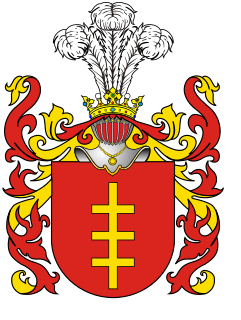
Bojcza is a Polish coat of arms. It was used by several szlachta families.
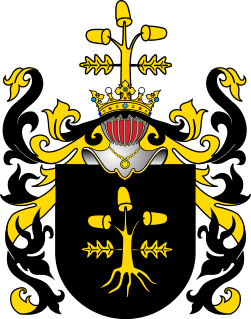
Dąb is a Polish coat of arms of Czech origin. It was used by several szlachta (noble) families.

Wieniawa is a Polish coat of arms. It was used by several szlachta families in the times of medieval Poland and the Polish-Lithuanian Commonwealth.

Hozyusz is a Polish coat of arms. It was used by several szlachta families.

Klamry is a Polish coat of arms.

Bełty - is a Polish coat of arms.
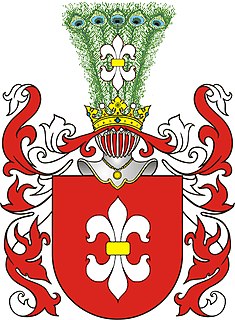
Gozdawa is a Polish nobility Coat of Arms. It was used by several szlachta families in the times of the Kingdom of Poland and the Polish-Lithuanian Commonwealth.

Jeż is a Polish coat of arms.

Achinger is a Polish coat of arms. It was used by several szlachta families in the times of the Kingdom of Poland and the Polish-Lithuanian Commonwealth.

Cieleski is a Polish coat of arms. It was used by several szlachta families in the times of the Polish-Lithuanian Commonwealth. A variation of the Trestka coat of arms.

Pół Orła is a Polish coat of arms. It was used by several noble families in the times of the Polish-Lithuanian Commonwealth.

Alemani is a Polish nobility coat of arms originated from Italy.

Czewoja II is a Polish coat of arms. It was used by several szlachta families in the times of the Kingdom of Poland and the Polish-Lithuanian Commonwealth. A variant of the Czewoja coat of arms.
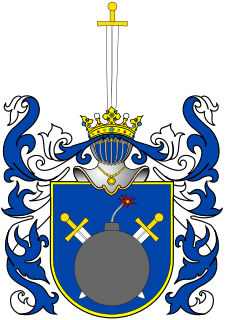
Beztrwogi is a Polish coat of arms. It was used by the Lipiński family in Congress Poland.
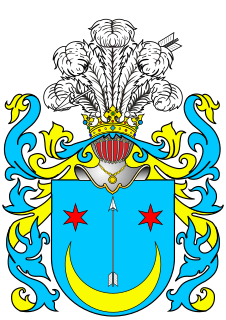
Biliński - is a Polish coat of arms. It was used by the szlachta Biliński family.





